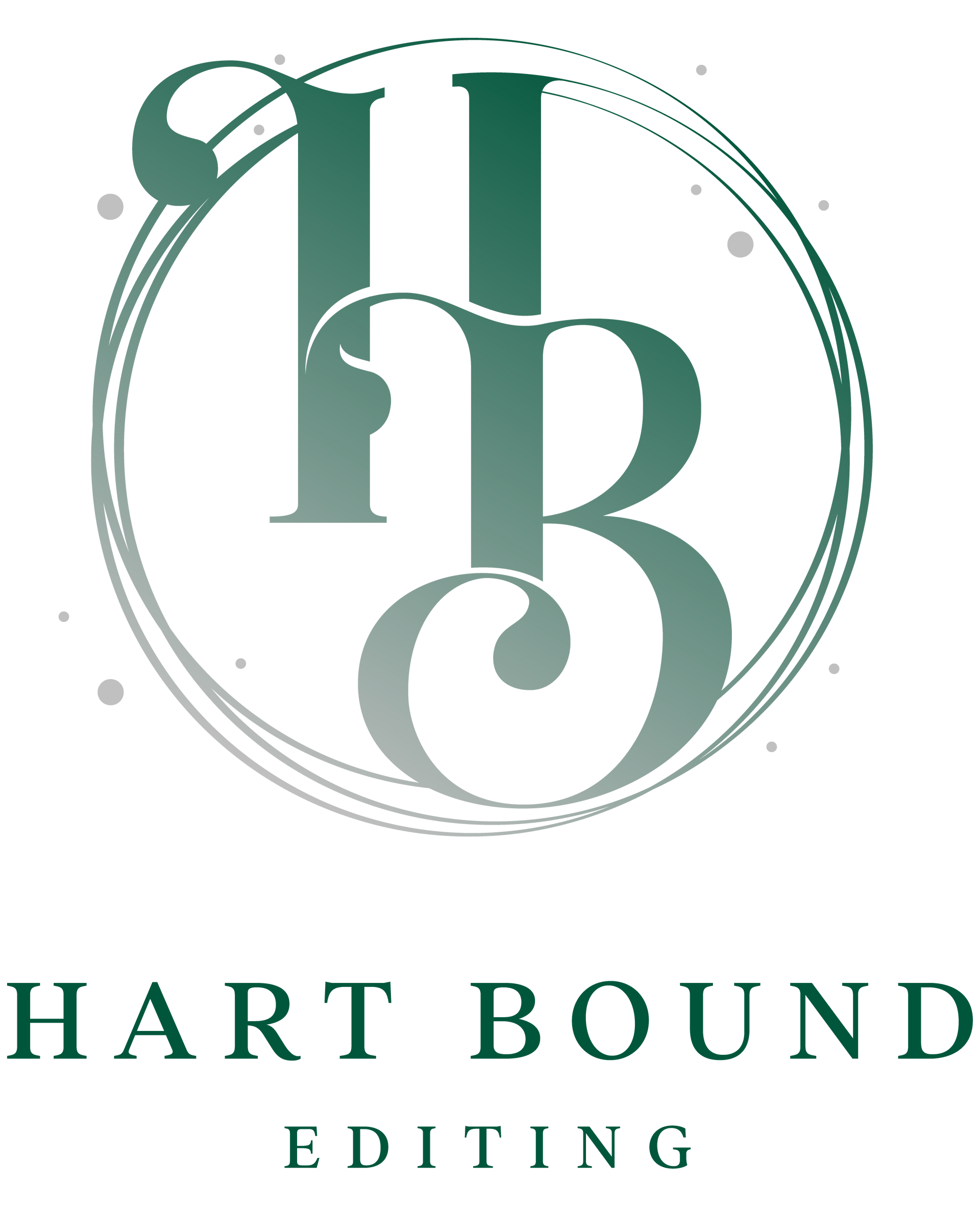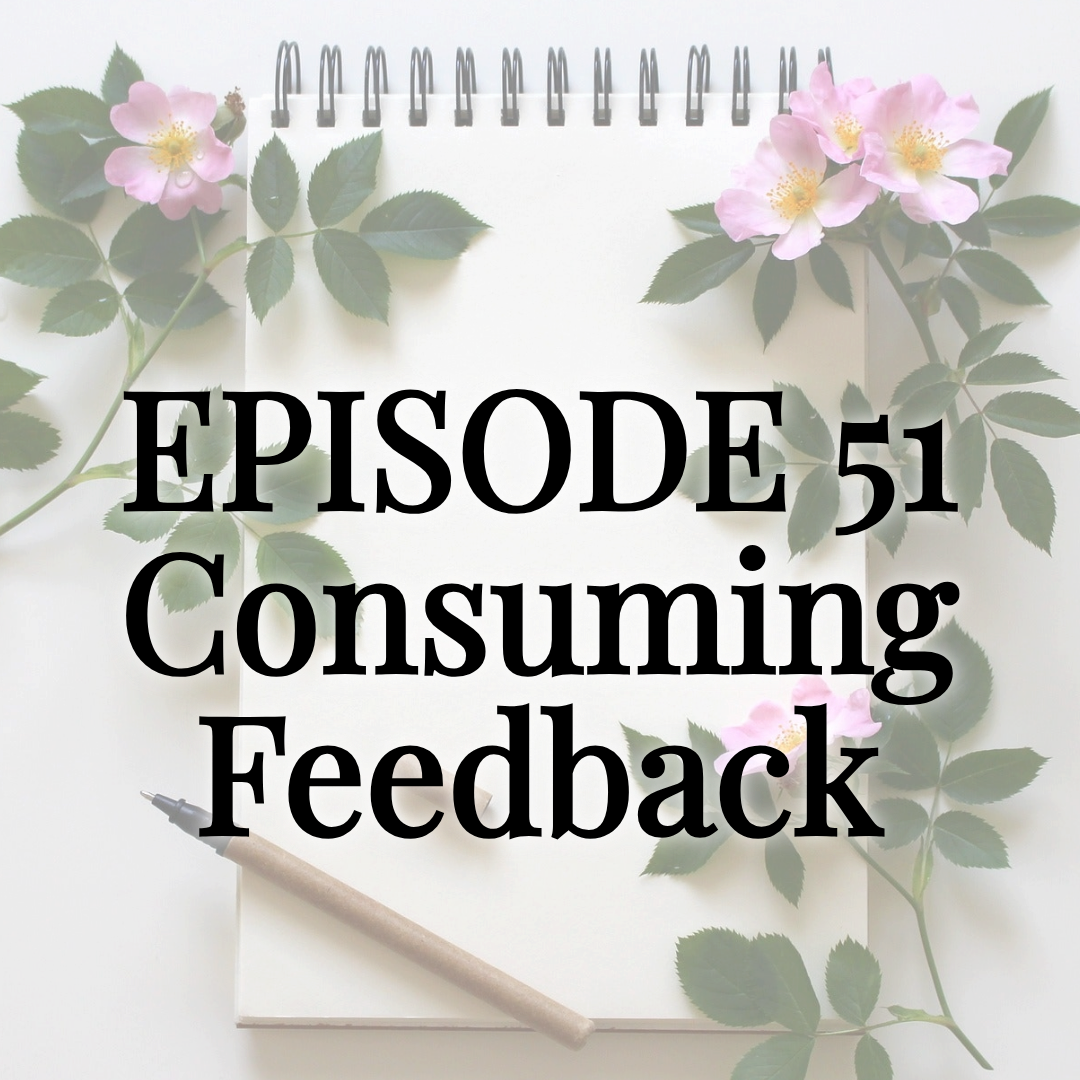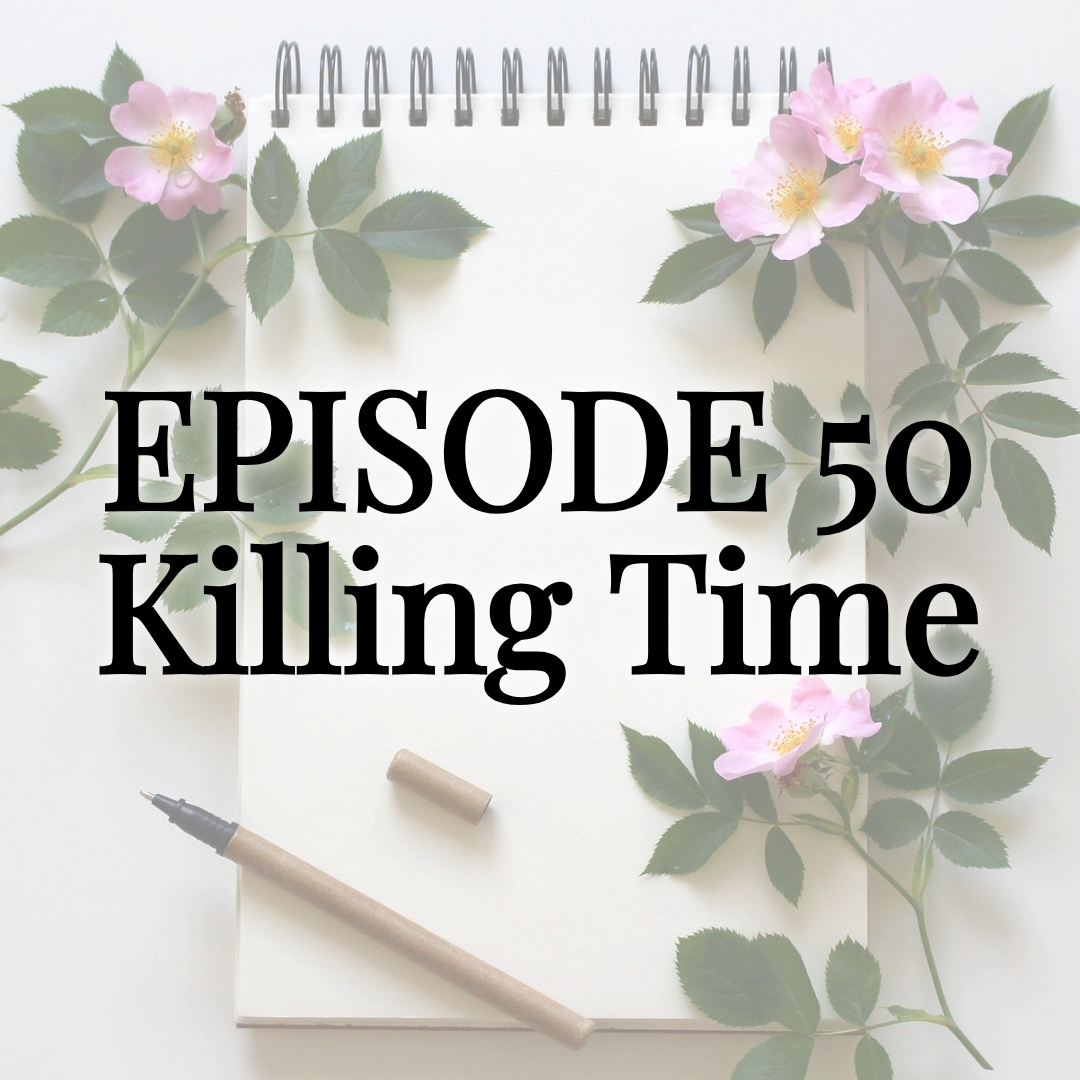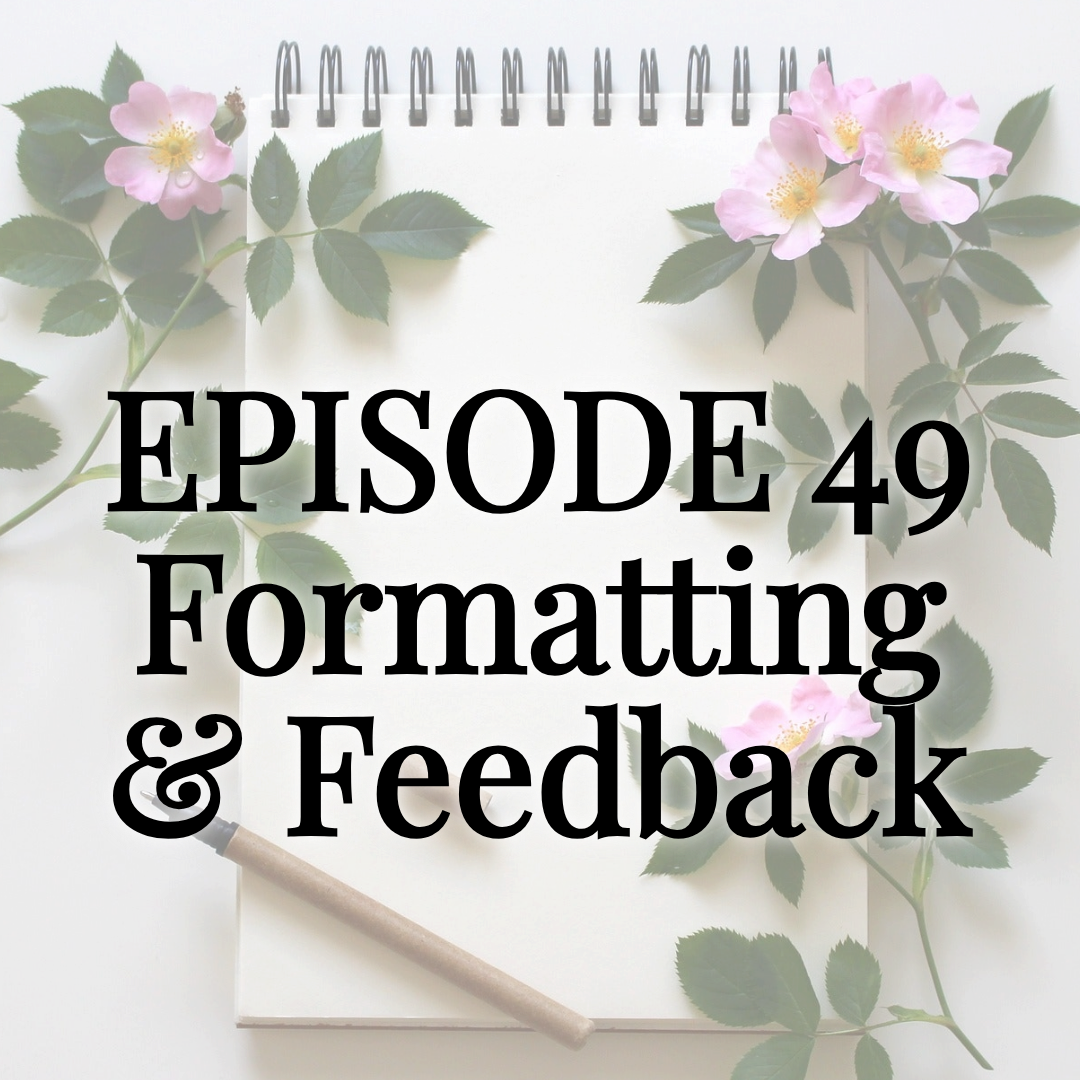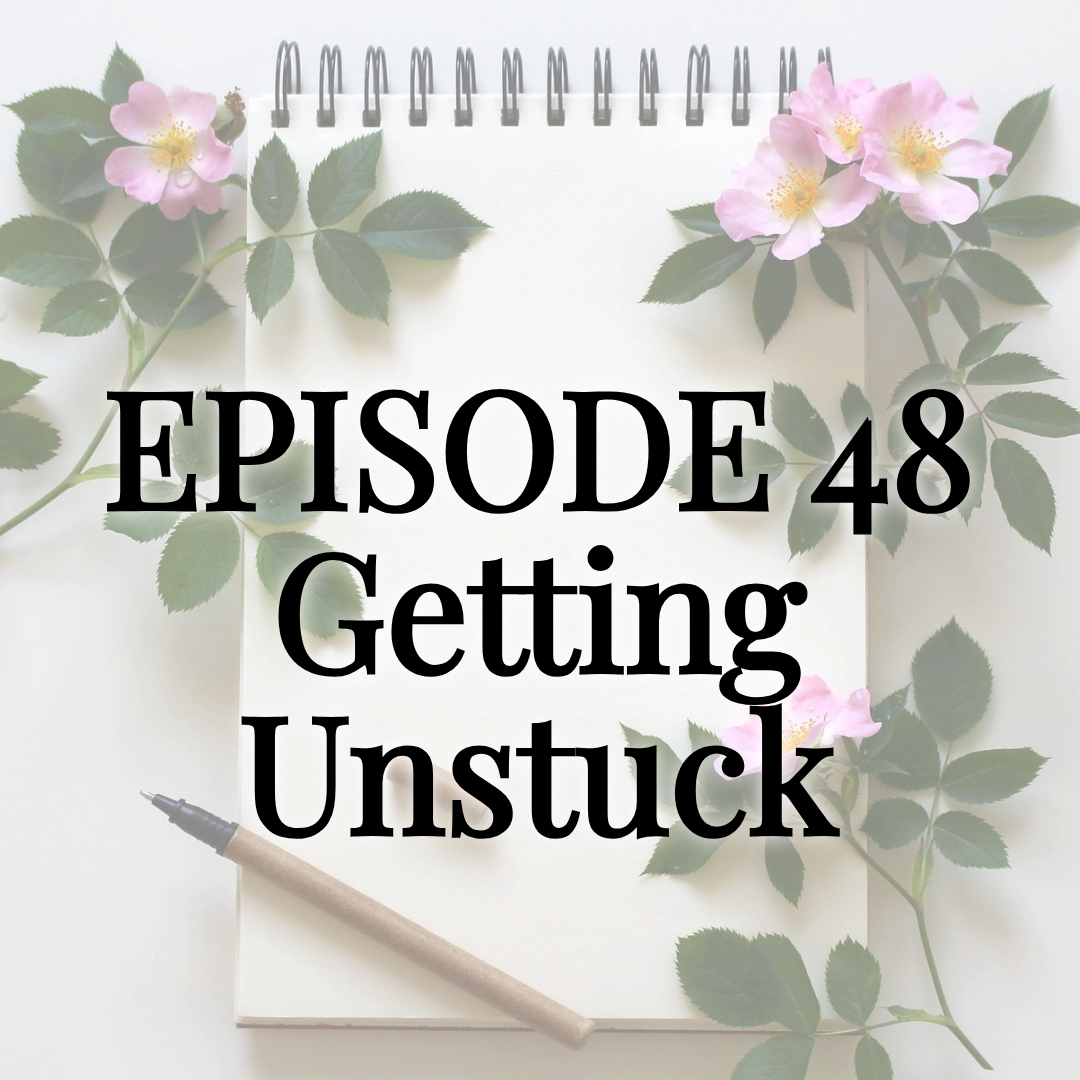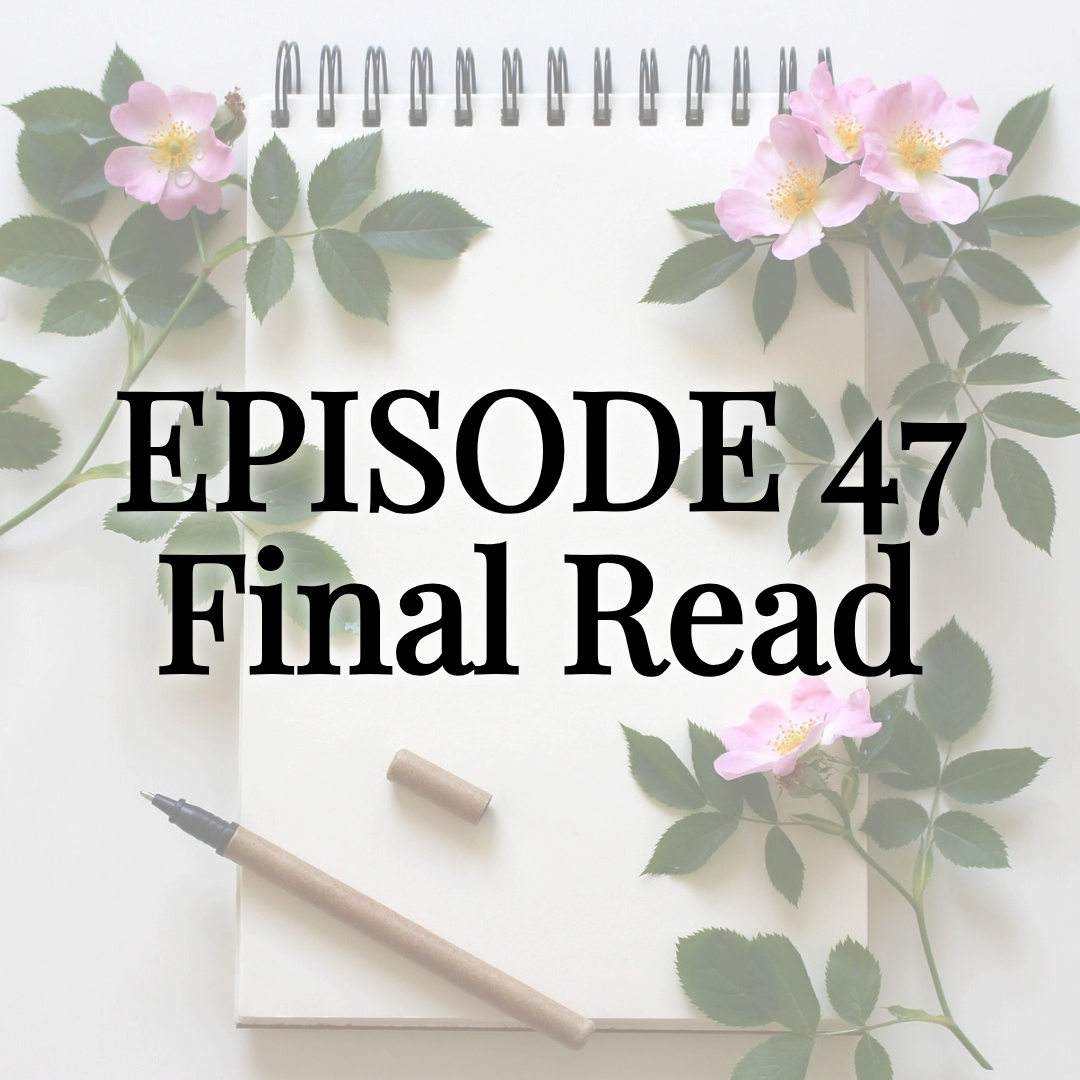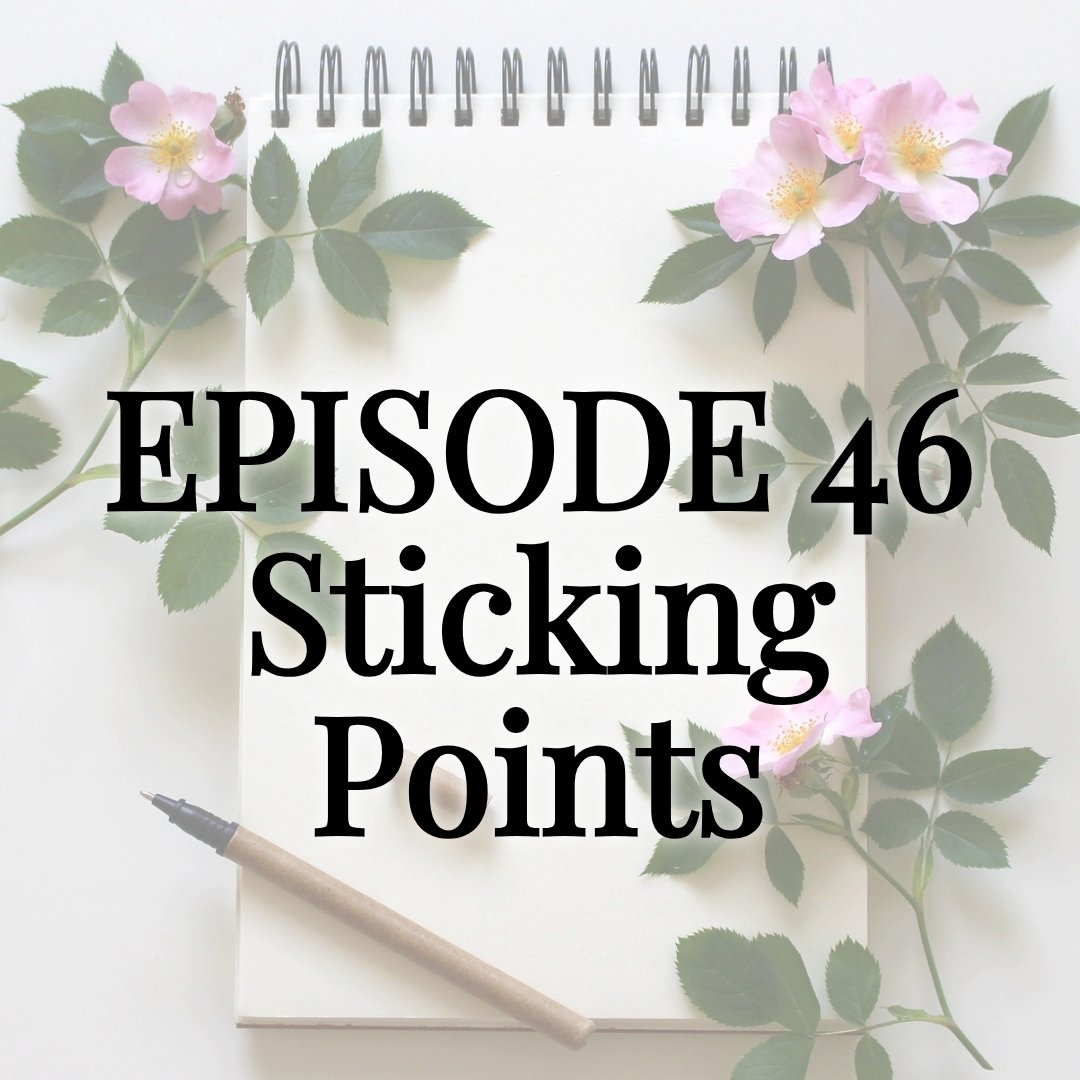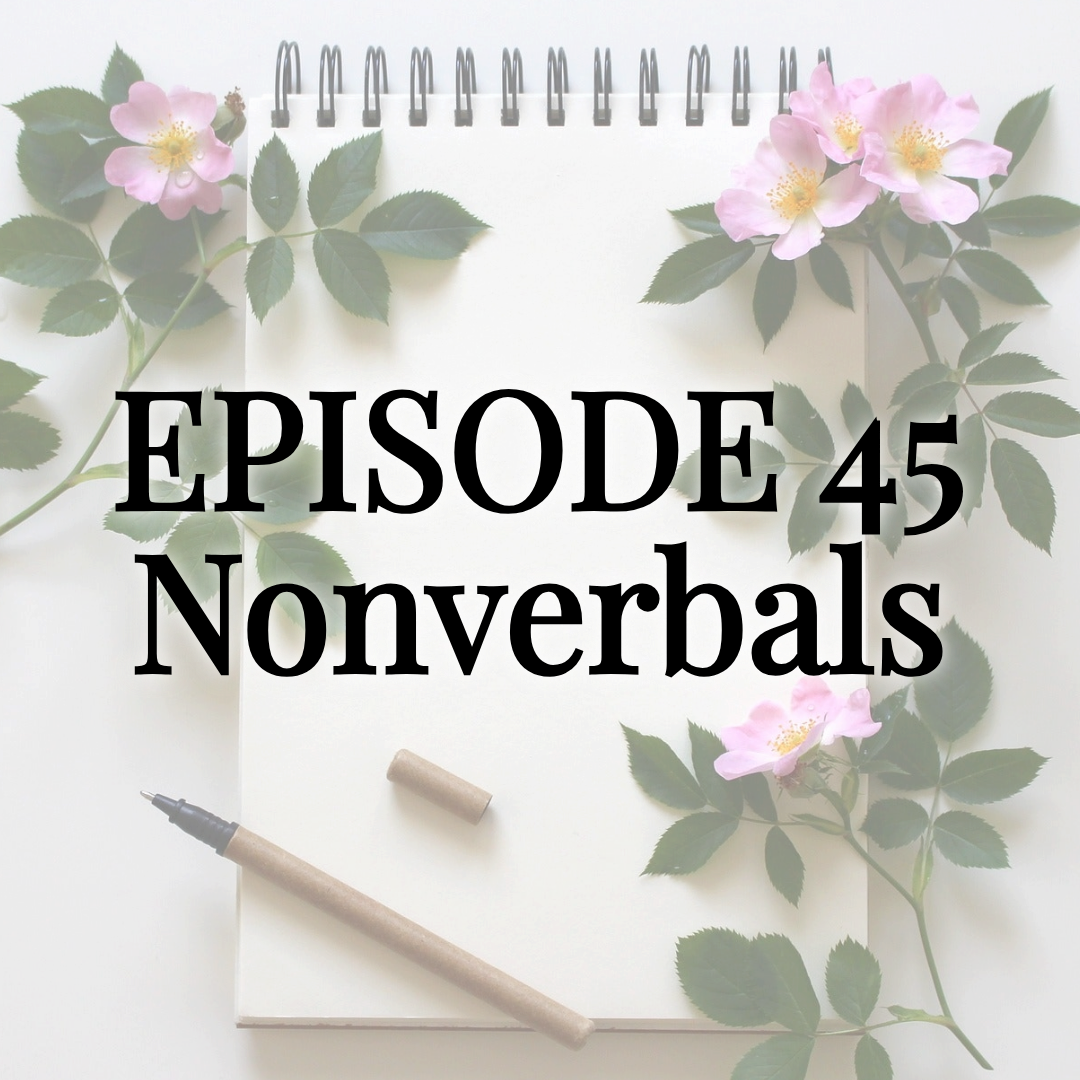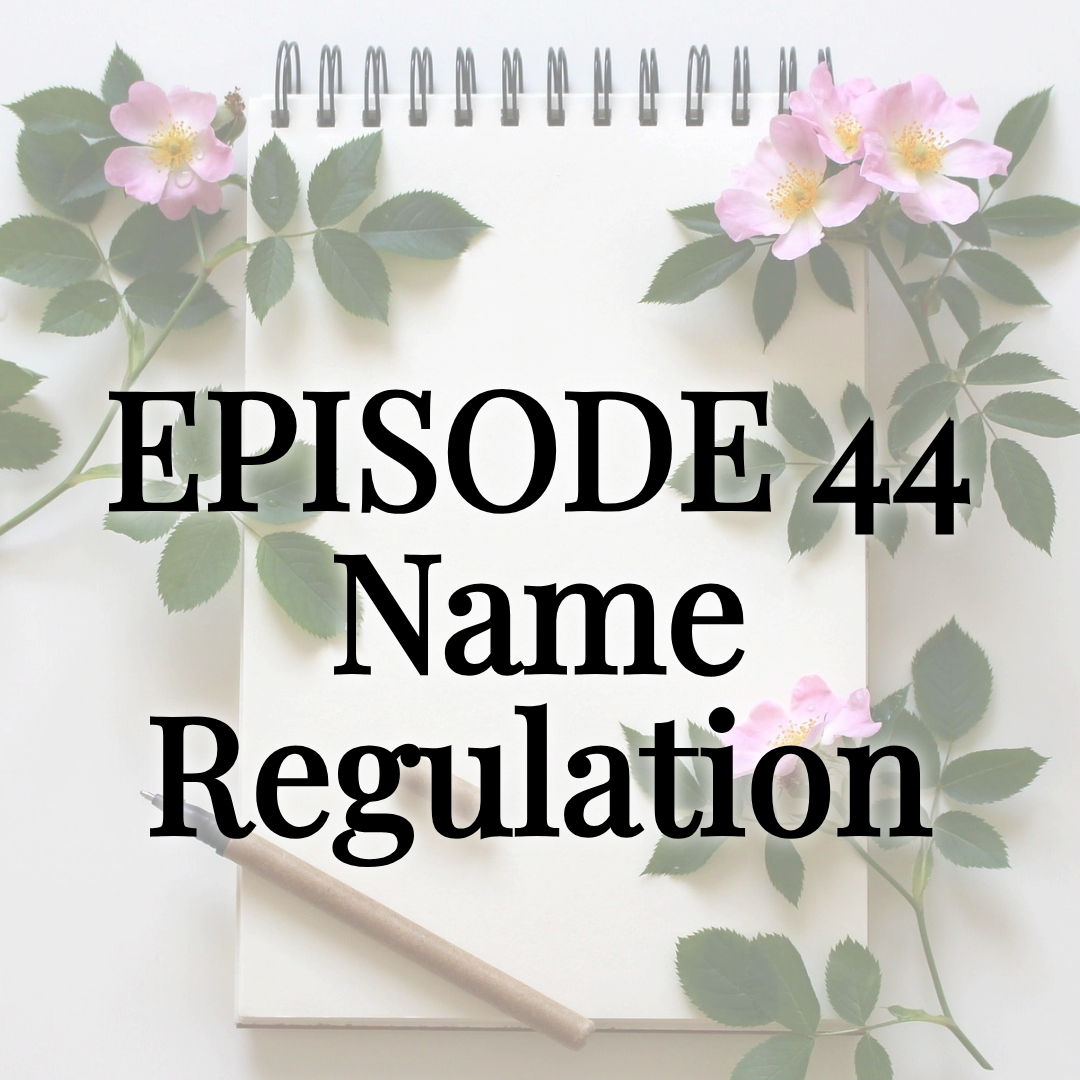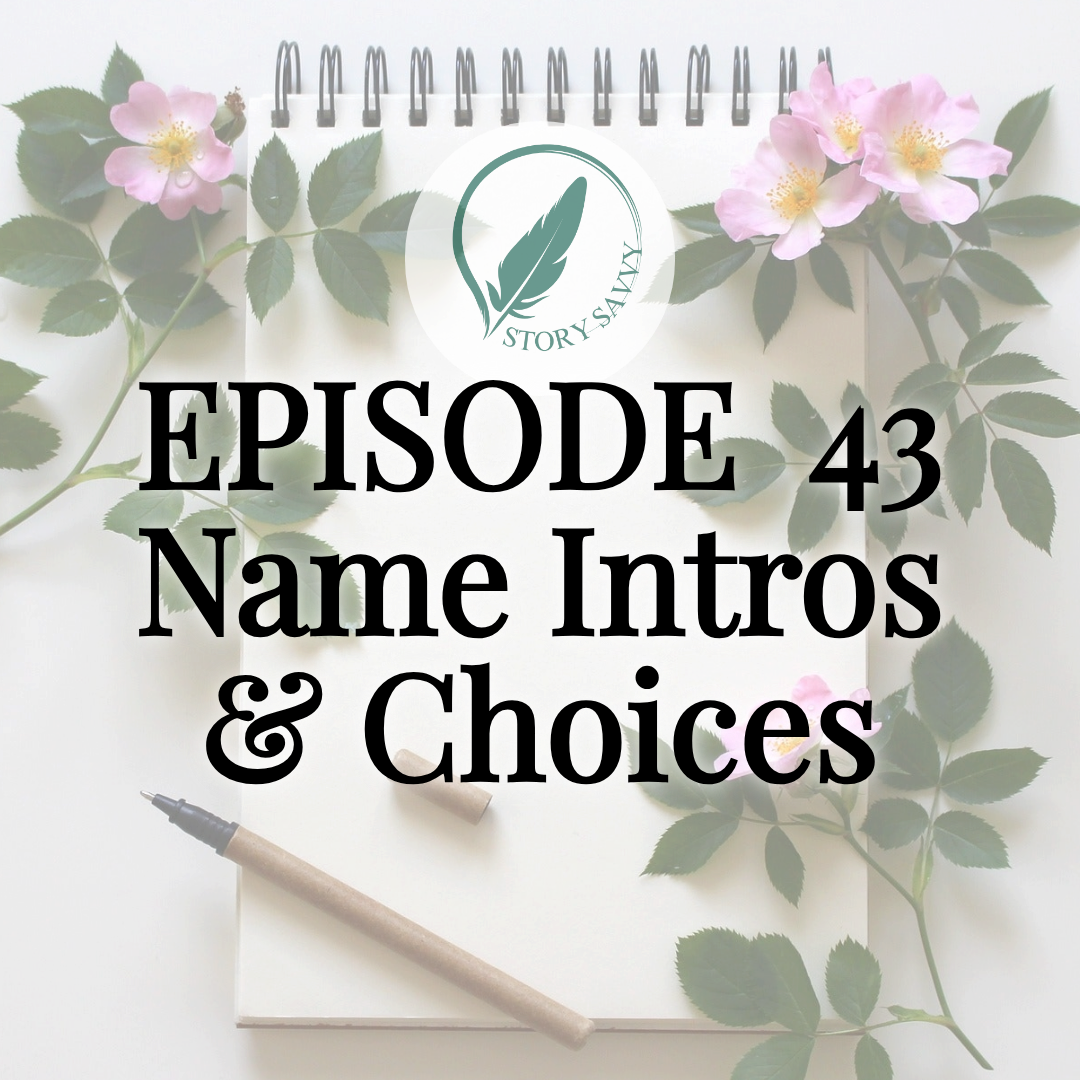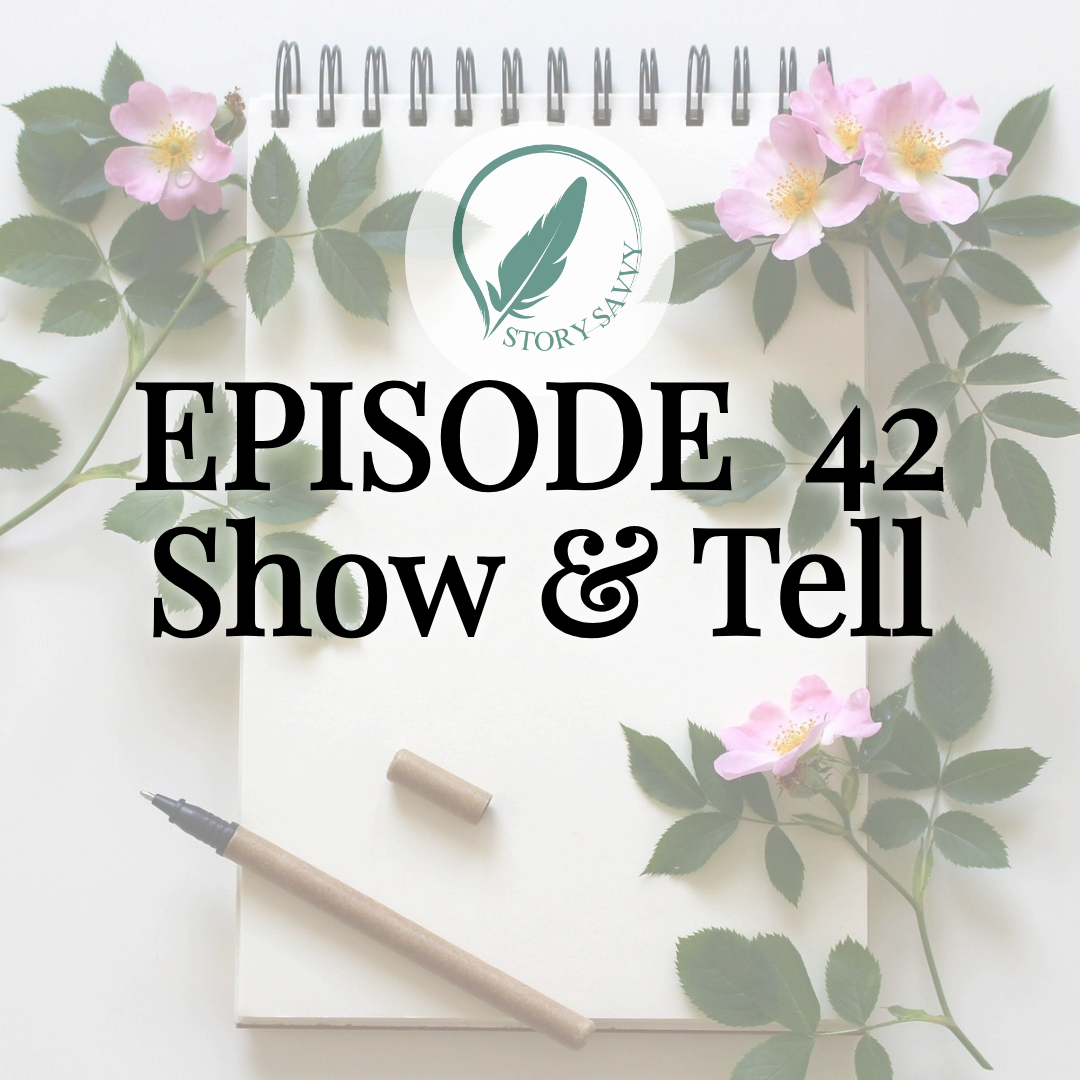Tying Up Loose Ends: Story Savvy Self-Editing Episode 26
Tying Up Loose Ends: After-episode thoughts, overview, and transcript...
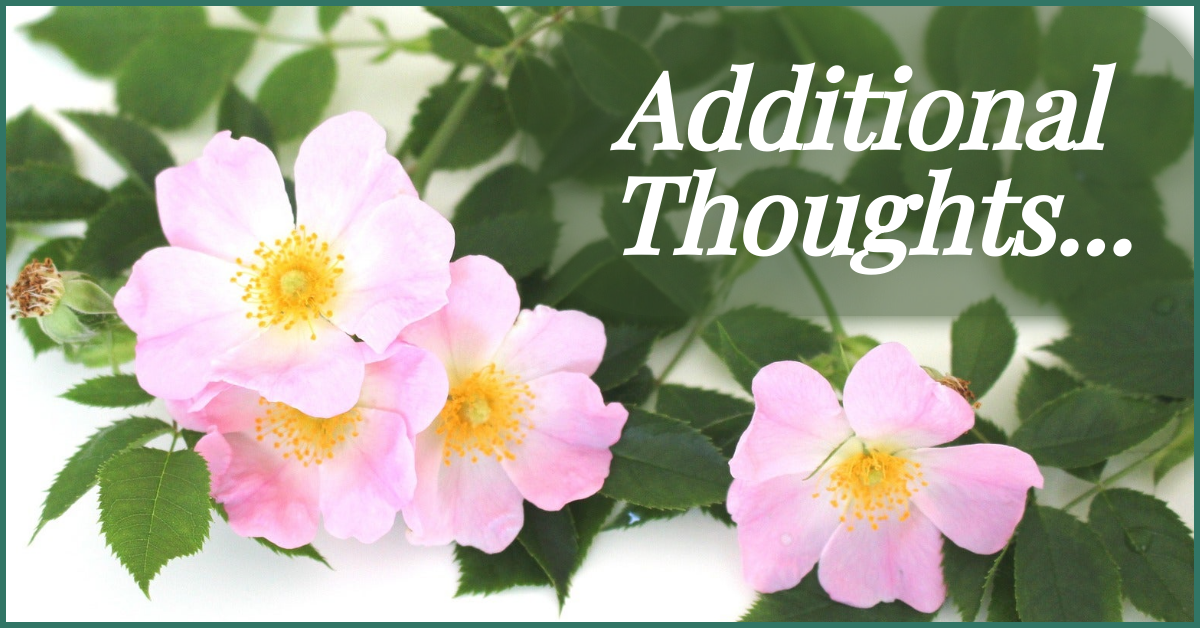
First of all, I realize that listeners may expect this episode to address the pros and cons of cliffhanger endings more that it actually does. For my full run down on that topic, I refer you back to an earlier installment of this series, Episode 7: Beginning, Middle, & End. While we do mention my advice on cliffhangers briefly here, that episode goes much more in-depth.
It's also worth mentioning that, if you can’t wrap something up without drawing out your resolution too long but the plot thread or aspect does need to be wrapped up to deliver necessary emotional payoff or avoid frustrating your readers, you may need to rework or remove that whole aspect of your plot. Always feel free to think outside the box, come at it from a different angle, or trust your gut.
Happy editing!
Episode 26 Overview:
Tying Up Loose Ends
"Are all of my subplots, plot threads, seeds, and foreshadowing either tied off in this story, or sufficiently threaded through past the end?"
Looking for plot structure tips, such as planting story seeds, when to leave plot threads open, or fixing plot problems? In this writing podcast for authors, we dive into self-editing strategies that help you make intentional choices around plot threads, foreshadowing, and planting story seeds.
In episode 26 of the Story Savvy Self-Editing series, developmental editor Rebecca Hartwell and aspiring fantasy author Agnes Wolfe explore how to tie up loose ends—or purposefully leave them dangling—especially when writing a fiction series.
Rebecca explains the difference between seeds and subplots, shows how to track them throughout your manuscript, and helps you evaluate whether each element needs a payoff. You’ll also learn how to create clarity and emotional satisfaction for readers without tying everything in a neat bow.
In this episode, you’ll learn:
- When it’s okay not to resolve a plot thread
- How to tell the difference between a seed, a subplot, and a plot thread
- Why standalone novels require different resolution strategies than series
- How to track seeds, subplots, and setups across multiple books
- Tips for ensuring every emotional payoff lands
Whether you’re revising your manuscript or outlining a series, this episode will help you bring intentionality to your storytelling—and turn a good ending into a great one.
Recommended Resources
Need a Developmental Editor? Check out my services through the website menu above!
Author’s Alcove Membership:
http://authorsalcove.com
Fantasy Book Giveaway:
AuthorsAlcove.org
See you next week for episode 27: Magic Systems & Fantasy
Episode 26 Transcript:
Tying Up Loose Ends
Rebecca Hartwell: Hello and welcome to the Hart Bound Editing Podcast. This is episode 26 of the weekly Story Savvy series, where we tackle the 52 biggest self-editing topics and tips to help you make your good story great as an aspiring author asks me, a developmental editor, all of the questions that you have wanted to. We've covered a bunch in this series so far, including last week's episode on integrating and checking our subplots and plot threads.
Today, we are going to take a look at when, where, how, and why to tie up those plot threads and anything else that you set up, foreshadowed, or seeded. By the end of this episode, you'll hopefully feel confident finding everything that this topic applies to in your specific manuscript, and have an understanding of the pros and cons about wrapping something up or leaving it dangling.
Joining me to ask all of the questions is my friend and co-host, Agnes Wolfe. Welcome.
Agnes Wolfe: I'm an aspiring fantasy author who hopes to release her first middle grade fantasy later next year and also host and founder of Authors' Alcove. I'm here today to tackle this topic of deciding between wrapping things up or leaving them open, and I have lots of questions for her.
So, picking up where we left off in the last episode: is tying things up always the right thing to do? If not, how should we be deciding if we should, or what, or not?
Rebecca: Essentially, no, it is not mandatory that everything gets wrapped up, and it's not always the right choice. One of the situations in which it isn't is: if doing so would make your resolution way too long—you don't want to have chapters upon chapters upon chapters after your climax just to get everything wrapped up.
The second scenario in which that's not ideal is if you have a series that you're trying to carry things over for. If you have a standalone, there is a higher expectation of wrapping things up, but if you have a series there's a lot more wiggle room there.
And then the last consideration here is just how much emphasis you put on setting things up, or seeding, or foreshadowing. If you put a lot of emphasis on setting them up, you need to put a proportionate—if not equal—amount on wrapping things up.
If you didn't—if that's not the kind of story you're telling, where you're putting a lot of effort into planting clues and things—you can get away with leaving a lot more dangling.
This is a topic where I really, really want to remind folks of a point that you've brought up in a few episodes, which is: any of the self-editing that you need to do related to this topic is likely a matter of adding or tweaking one sentence in the resolution of your story. So, the entire section of the book after the peak of the climax. These should all be quick and easy fixes with plenty of wiggle room about where exactly you implement them.
Agnes: So, you just mentioned series, and I know my own book is a series, so I have a question on that. If I set up or foreshadow something, and like, right now I'm finishing up the first book and there's definitely foreshadowing stuff there. How can I most effectively make sure they are not forgotten by my reader when they go to read later? Both in the book where I set it up and also in the book where it finally pays off?
Rebecca: In the book where you first set it up, I recommend above all else that you mention it once, maybe twice, in the last couple of chapters. And this can be a very passing mention—it just has to be thought of, or mentioned, or seen, something like that.
In the book where it pays off, make sure that you are seeding it in that book too. This came up in the Deus ex Machina episode. If you've seeded something in, let's say, book one in a series, you have to also seed it in book four where it pays off. You can't rely on your readers having read, let alone remembered, that seeding in book one.
And if you—like I just gave in this example—if you have multiple books in between, then I suggest mentioning it at least once in those in-between books, just to keep it established as part of the world, or plot, or character build, or whatever that happens to be.
Agnes: So, when we choose not to wrap up something, what are some best practices around that? And does it change if it's like a series and a standalone?
Rebecca: Like I said, it does. If you are writing a standalone and you choose not to wrap something up, I recommend either using that very intentionally and making it clear in the way that you deliver it—"Hey, I'm intentionally leaving you with all of these questions"—or doing what you can to show, “well, the protagonist also has these questions dangling. The protagonist can't get the answer to this question, so you don't get it either.” But very intentionally addressing it is even more important in a standalone than in a series.
So, looking at both, and now shifting over to series a little bit more, again, making sure that the protagonist can't get the resolution that you want to withhold from the reader is definitely the best approach there.
Another approach would be to mention the thing in the lack of closure to show that you didn’t just forget about it. That can be very important in showing that it was an intentional choice rather than, "Oh, this author isn't a very good author. They just forgot to wrap this up."
And then lastly, make a note to make sure that you follow up on whatever that was later, if it’s a series. If you seed something in book one and you have this thought at the time of, "Oh, I’ll pay this off in book four," go have a note for book four and write it in. Just, "Hey, remember to follow up on XYZ."
Agnes: And one of the things—when you said that when it’s a standalone, to make sure that it’s done intentionally—one of the books that came to mind, I had to, if you saw me like typing, I was trying to remember what it was called, but The Giver and, like, you know, there’s other books like that where there's—they intentionally leave questions, and you're supposed to. You’re supposed to close the book and think about it.
And if it’s done well, you will be thinking about that book for a very long time afterwards.
But I know there’s also times when it’s not done well. And, for example, I can think of a book that you in particular were very annoyed by. I don’t know if you could think about it, where the person did not tie up. And I think that word "intentional" is probably, like, key as far as—especially standalone.
But like, let’s say if we do want to tie up a subplot or all of our subplots, what is the best way to make sure we tie up all of the loose ends and don’t leave any loose, such as, you know, certain books?
Rebecca: Yeah, I am going to recommend that you list all of these things. I know I recommend lists a lot. I love lists. I think they are great. So, I suggest—specifically for looking at wrapping these things up—name what the thread was, or the plot, or the seed. Name the core moment. What were you setting up with that plot? What were you setting up with that thread? And then list and check all of the events or questions that you used to set it up, checking that each thing on that list—or at least the biggest—happens or gets an answer.
So, if you’re setting up an event in this thread, how you check to make sure that it’s wrapped up is: make sure that that event you are setting up actually happens. If the seed was, “Oh, I wonder if...” or “What about so-and-so?” then you make sure that that thread got wrapped up by making sure that an answer is given. Ideally, clearly, and ideally, memorably. That’s how you check that these things got wrapped up.
Agnes: So I know that for myself, like, when I put a seed in, like, I will take notes to try to keep track of that, and I—Is there a better way, or what way do you choose to use to make sure that you're—file—you're track—you're keeping track of all of your seeds and all of your subplots? Would you recommend taking notes, planning, drafting?
Rebecca: You can… First of all, you can take notes wherever works best for you. For some people, that's spreadsheets. For some people, that's physical notes. For some people like me, that tends to be [Microsoft] Word documents or Google Docs.
The important thing is that you remember where you wrote all of these things down, and ideally, try to keep them together in one place. It can be harder to keep track of if you have a bunch of different notes across a bunch of different platforms or medias.
Yeah, so there isn't one right way that I'm aware of. Keeping lists is how it's done unless you are a genius with perfect memory. And yeah, I tend to make these lists in my outlining document so that I have it collected with all of the other backend information for a series—so, the information that's for me, but not necessarily for the reader.
And in that, I personally keep three very specific sets of lists.
The first is about my characters. I have a character roster, sometimes it might be called a character bible or character sheets. And in this, I have their name, I have any old names that I used to think of them as when I was drafting—because sometimes those slip through and I need to search for them—I have notes on their specific mindset, so their internal... what’s the word I'm looking for... like landscape. Is this person generally optimistic or pessimistic? Are they outgoing or introverted? That sort of thing. And then I will also list their skills, their change arc, their magic color, things like that.
The second list set that I will include has to do specifically with the arena—so the physical space that the story is playing out on. And this might be notes that I collected from researching Stonehenge or, you know, a link to a Pinterest board with pictures of buildings that I want to describe in my writing, stuff like that. That same list also includes my overarching themes. So my statements like: I am writing in a modern equivalent Roman-themed world. My books are generally this tone. I want to have this effect on my readers. This emotion is always going to be at the center of my stories. Those sorts of things.
And then the third set of lists that I will keep for tracking these plots and plot threads and everything is specific to plot points and events. So this is where I would list things like, all right, at the beginning of book one, this is the climax event. Okay, well, that has five different elements that all need to come together for that event to happen. All right, I’m going to list all five of those events, and I'm going to list all of the places where I threaded those through. So, this element comes up in chapters 1, 6, 9, and 15—that kind of stuff.
So, while I'm drafting, I will tweak this. I usually make the list when I’m doing the plotting and the outlining so that I can make sure I'm planning to put these things in.
And then when I'm drafting, I will reference those lists now and then to make sure that I’m keeping things cohesive and on theme, and to make sure that I am bringing these things up where and as often as I intended to.
And then during self-editing, I might rearrange or change my mind on things—add, scrap, or reposition elements in those lists. It's also the lists that I use when I am checking my subplot and plot threads—though given how I outline, that's often just a quick mental check for me to make sure: “Okay, I meant to mention it here, here, and here. Did I? Yes.” And then if I'm not sure, I will go in and check. But this is usually a quick process for me because I do so much of that work in the outlining.
Agnes: So, when we're talking about things to wrap up that aren't really big enough to count as subplots, what exactly do you mean by seeds? Is that the same as foreshadowing?
Rebecca: It can be. I tend to use those two terms very interchangeably. The consideration here is that a subplot, like I'd mentioned in the last episode, has a genre attachment to it. So, you can have an adventure subplot, you could have a romance subplot, you could have a maturation subplot. Those all speak to a bigger understanding of the conventions, the expected moments, the emotions—all that kind of thing.
When I'm talking about seeds—which sometimes I'll refer to as plot threads, but the seed is just kind of the beginning of the plot thread—what I'm talking about is the first time you mention Chekhov's gun, for example. You mention the gun that's going to go off in the midpoint, whatever. So, the mention of that gun the first time is the seed.
And then every time you mention it again, or allude to it, or hint at it, or question things around it—that's all growing that seed.
So, the seed is simply whatever you plant with the intention of later harvesting it. And the harvest is when you have the gun go off, or when that ability that was such a pain in their butt in chapter five, that they've slowly been trying to work on, comes into itself and can be used productively for what they want to use it for. The idea of a seed is that it seems unimportant at the time that you plant it. (That's not necessarily a requirement, but it's a common trait to it.) And you plant it specifically with the intention of being able to harvest it later to give the reader an enjoyable moment.
That's all that really is. It's a seed if you set it up and then later the reader gets a little bit of a hit off of it from whatever emotion or sense of mystery or surprise or whatever that payoff was.
Agnes: How can I make sure I paid off all the seeds in my book? Or do you have a recommendation to make sure I did not neglect any?
Rebecca: Those list suggestions can be helpful, but the seeds can also be small enough that that could be really hard to spot. So I recommend that as you're doing a read-through of your manuscript—of which you should do many in the self-editing process—when you see a paragraph or a sentence where you know that you were planting a seed, pause for a beat and just think, “Oh, did I pay that off?” And name where in the story you did. Or, if you aren’t sure, go check where you think you might have done that.
Beyond that, try making the list. Check each one. Name where you think it paid off. Go check that with fresh eyes if you can, to make sure that it's going to come across how you intended.
And how you define whether or not that seed paid off—so that you have an answer there is:
- It paid off if it changed how the protagonist thought, saw the world, or continued pursuing their goal.
- It paid off if it created emotion for the protagonist, and by extension, the reader.
- And lastly, it paid off successfully if the story wouldn't be the same without it. And by it, I mean the seed and the thread and the payoff.
Agnes: So as a writer, I think we know what our story should say. And so, it's very easy for us to overlook the fact that our planted seed had never sprouted—or because in our mind it did, because we know what it was supposed to do, even if we forgot to do it on paper. And then our subplots were wrapped up because we know more than the reader. And all of those sort of things. How can we catch these?
Rebecca: So, mostly outside feedback. This is one of those things where, because we thought we paid it off, or we intended to, it can be really hard to get out of our own perspective.
Beyond that, it just goes right back to those lists. And if you can point at a passage where you're like, “yes, it paid off right here. This is the end, this is the wrap-up, the tie-up of this particular plot thread or seed or whatever,” that can be helpful, but it may or may not come across that way.
So, get alpha readers, get beta readers, get a dev editor, get ARC readers—whoever you can find to be those fresh eyes for you.
Agnes: So, we do need to wrap up. I have one last question for you.
So, I know that not tying up big seeds or major subplots can feel very unfulfilling. I remember one of our Meet the Author book clubs, which I kind of referenced before—you had felt, as you were finishing the book, that they were doing such an excellent job of setting something up. But when we got to the end, you felt it never paid off. You felt very confused and disappointed because you felt you were almost tricked in a way.
So, I know we need to be careful not tying up seeds, but I do have to ask, just like in the subplots, is it ever okay if we don't harvest a seed?
Rebecca: Yes. But the same rules apply.
So, going through a brief little list here:
- Mention it to show that you didn't just forget to pay it off.
- If the protagonist never gets an answer to whatever you'd set up, name that. Have the protagonist have a moment of going, Wait, I never got an answer to that thing.
· And then lastly, really look at it. Look at whether you are delivering the core emotional payoff promise of your story.
If you aren't in the end—and I recently edited a book where this was an issue, so it's top of my mind at the moment—but if you reach the end and you are any degree, be that one sentence or more, shy of giving the reader that catharsis or that breath or that relief, whatever your promised emotional payoff is, then you do need to pick a plot thread, ideally your main plot thread. (Go back to last week's episode.) That would deliver that emotion, and tie that up enough to deliver it.
In the book that I just edited, it was literally a matter of one more sentence. Because it was a great thriller. It built up. It built up. And the book ends without giving the reader either a sense of justice or catharsis because he was an asshole and now she's free of him. It was one sentence shy of delivering an emotional payoff. And that matters. So, to that extent, you do need to pay stuff off.
Agnes: Well, thank you so much for your insight. I feel like the biggest theme here is that we need to be intentional. Anyway, so thank you so much. I have been enjoying this series so much. I really am enjoying this particular section the most, just because this is where I am in my own self-editing process. Again, thank you.
Rebecca: Excellent. Yeah! Next week we will continue in the very similar themes, so hopefully it will continue to be helpful. And we are going to do the first of two genre-specific episodes [this next one] focusing on fantasy and magic systems specifically.
So, for right now, I would like to thank everyone who has followed along with this series. We would appreciate it if you could please like and subscribe to the Hart Bound Editing Podcast and the Authors' Alcove Podcast, where you can find lots more content for fantasy authors and readers beyond this joint series.
Thank you very much.
Agnes: And I am actually, completely geeked about next week's episode. See you then.
Rebecca: Thank you so much for listening to the Hart Bound Editing Podcast. I look forward to bringing you more content to help you make your good story great so it can change lives, and change your world.
Follow along to hear more, or visit my website linked in the description to learn how I can help you and your story to flourish.
See you next time!
